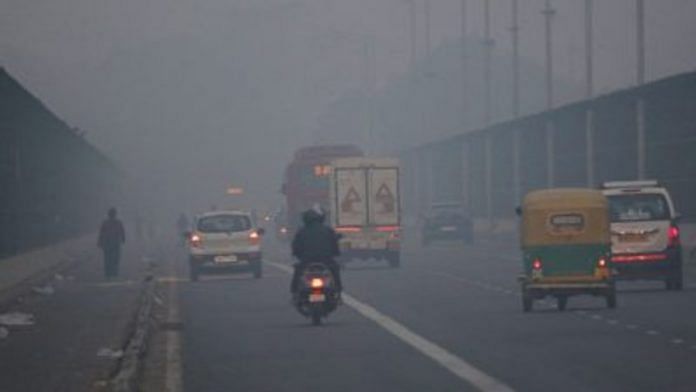New Delhi: India’s recent clean air and blue skies, an unintended consequence of Covid-19 lockdowns, may soon be ending as seasonal crop fires start, one of the main culprits behind the nation’s chronic smog.
Pollution across Indian cities, which suffer some of the world’s worst air, is compounded every winter by stubble burning after the monsoon-season crop harvest. That might have already started, with fires and smoke in parts of northern Punjab state showing up in images and data from U.S. National Aeronautics and Space Administration.
“Some incidents have been detected in Amritsar,” Krunesh Garg, member secretary at Punjab Pollution Control Board, said by phone Tuesday, referring to the state’s second most populous city. “Our officers have visited the sites and we’re going to take action” as the burning is illegal.
India went through a rare period of smog-free skies earlier this year as government actions to control the spread of Covid-19 halted activity in Asia’s third-biggest economy, from factories to trains, planes and automobiles. While benefiting the environment and health, the nation suffered the biggest quarterly slump among major economies in April-June and is seen on track for gross domestic product to shrink 9% this year, the worst performance across developing Asia.
Burning crop residue is one of the main reasons for the chronic air pollution in northern India, including the capital New Delhi. The toxic air costs the country as much as 8.5% of its GDP, according to World Bank calculations, besides shortening the lives of citizens.
The pollution intensifies during winters, as smoke rising from the farm fires drifts and is then captured by low temperatures, covering the country’s land-locked capital and other adjoining areas in a thick blanket of smog. Hotspots in Punjab can already be seen on NASA’s Fire Information and Resource Management System, which tracks fires using satellites.
Sutantar Kumar Airi, director of agriculture for Punjab state, said harvesting of some short-duration crops, a small fraction of the season’s harvest, might have started. He said he was unaware of any crop burning so far this season.
A panel led by P.K. Mishra, principal secretary to Prime Minister Narendra Modi, met last week to assess measures to stop crop stubble burning and to control air pollution. The panel noted crop fire incidents were high last year and issued directions to discontinue the practice.
“We have a long-term strategy in place, but all that is going to take some time,” said Garg, at the Punjab pollution agency. “We need to change the attitudes of farmers and provide them a market for crop residue, which can be a source of energy. All governments need to work hand-in-hand to meet this goal.”-Bloomberg
Also read: Glaciers in Ladakh, J&K melting at ‘significant’ rate, shows satellite data study



